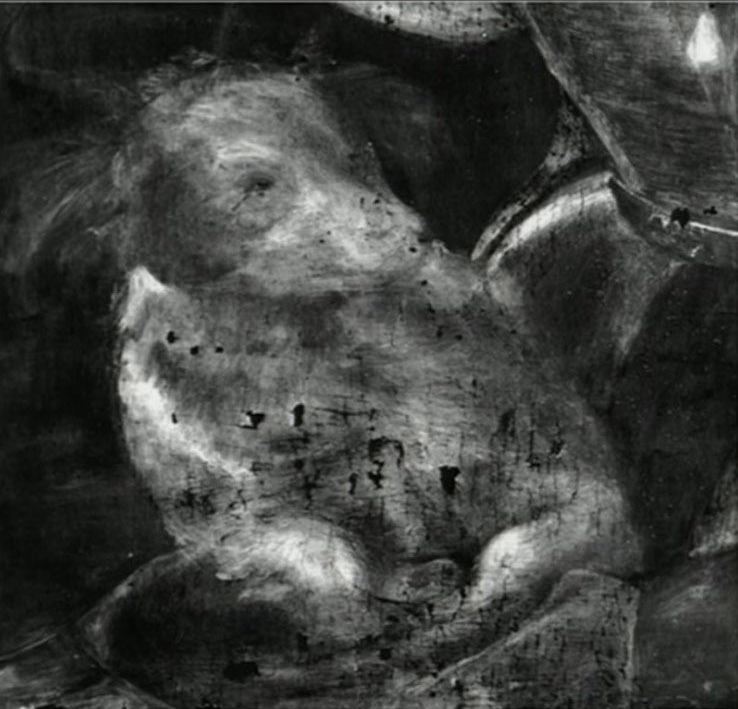Young Woman with Unicorn on:
[Wikipedia]
[Google]
[Amazon]
''Portrait of Young Woman with Unicorn'' is a painting by  The composition of the picture—placing the figure in a loggia opening out onto a landscape, the three-quarter length format—was apparently inspired by the ''
The composition of the picture—placing the figure in a loggia opening out onto a landscape, the three-quarter length format—was apparently inspired by the ''
Raphael
Raffaello Sanzio da Urbino, better known as Raphael (; or ; March 28 or April 6, 1483April 6, 1520), was an Italian painter and architect of the High Renaissance. List of works by Raphael, His work is admired for its clarity of form, ease of ...
, which art historians date ''c.'' 1505-1506. It is in the Galleria Borghese
The Galleria Borghese () is an art gallery in Rome, Italy, housed in the former Villa Borghese Pinciana. At the outset, the gallery building was integrated with its gardens, but nowadays the Villa Borghese gardens are considered a separate tourist ...
in Rome
, established_title = Founded
, established_date = 753 BC
, founder = King Romulus (legendary)
, image_map = Map of comune of Rome (metropolitan city of Capital Rome, region Lazio, Italy).svg
, map_caption ...
. The painting was originally oil on panel, and was transferred to canvas during conservation work in 1934. It was in the course of this work that overpainting was removed, revealing the unicorn
The unicorn is a legendary creature that has been described since antiquity as a beast with a single large, pointed, spiraling horn projecting from its forehead.
In European literature and art, the unicorn has for the last thousand years o ...
, and removing the wheel, cloak, and palm frond that had been added by an unknown painter during the mid-17th century.
 The composition of the picture—placing the figure in a loggia opening out onto a landscape, the three-quarter length format—was apparently inspired by the ''
The composition of the picture—placing the figure in a loggia opening out onto a landscape, the three-quarter length format—was apparently inspired by the ''Mona Lisa
The ''Mona Lisa'' ( ; it, Gioconda or ; french: Joconde ) is a half-length portrait painting by Italian artist Leonardo da Vinci. Considered an archetypal masterpiece of the Italian Renaissance, it has been described as "the best known ...
'', painted by Leonardo between 1503 and 1506. Christof Thoenes observes: "However unabashedly Raphael adopts the pose, compositional framework and spatial organization of the Leonardo portrait...the cool watchfulness in the young woman's gaze is very different" from the "enigmatic ambiguity" of Mona Lisa.
The work was of uncertain attribution until recent times. In the 1760 inventory of the Gallery, the subject of the painting was identified as Saint Catherine of Alexandria and attributed to Perugino
Pietro Perugino (, ; – 1523), born Pietro Vannucci, was an Italian Renaissance painter of the Umbrian school, who developed some of the qualities that found classic expression in the High Renaissance. Raphael was his most famous pupil.
Ear ...
. A restoration of the painting in 1934–36 confirmed art historian Roberto Longhi's attribution of the work to Raphael, and the removal of heavy repainting revealed the unicorn
The unicorn is a legendary creature that has been described since antiquity as a beast with a single large, pointed, spiraling horn projecting from its forehead.
In European literature and art, the unicorn has for the last thousand years o ...
, traditionally a symbol of chastity in medieval romance, in place of a Saint Catherine wheel. Restoration work on the painting in 1959 revealed through radiography the image of a small dog, a symbol of conjugal fidelity, under the unicorn. It served as a sketch for the final appearance of the unicorn.

See also
*List of paintings by Raphael
The following is a list of paintings by Italian Renaissance painter Raphael. Together with Michelangelo and Leonardo da Vinci he forms the traditional trinity of great masters of that period. He was enormously prolific, despite his early death at ...
* Giulia Farnese
Giulia Farnese (1474 – 23 March 1524) was an Italian noblewoman, a mistress to Pope Alexander VI, and the sister of Pope Paul III. Known as ''Giulia la bella'', meaning "Julia the beautiful" in Italian, Giulia was a member of the noble Farnese ...
Notes
References
* *External links
* {{DEFAULTSORT:Young Woman With Unicorn 1506 paintings Paintings in the Borghese Collection Portraits by Raphael Works about unicorns